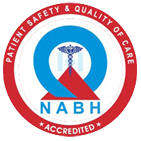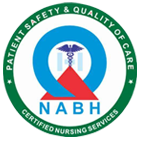FOLLOW THE MISSION HOSPITAL




Amblyopia is an eye condition that develops in children (that can also be present in adults) in which the vision in one eye is weaker than in the other. This occurs in the absence of evident ocular (eye) abnormalities that usually can explain the poor vision. Because amblyopia can have serious, permanent effects on your child, it is important that he or she have regular vision tests.
The most common cause of amblyopia is a significant difference between the focusing powers of the two eyes. For example, one eye may be very farsighted while the other one is not, or one eye has a lot of astigmatism (vision is blurred because the eye has an irregular shape), and the other eye does not. The brain will favor seeing out of the eye that provides a clearer and sharper image, and will neglect the other one. This neglect leads to a decrease in vision in the neglected eye.
Another cause of amblyopia is a misalignment of the eyes, leading to the brain favoring the image coming from the eye that is straight compared to that coming from the eye that is turned in or out. Ocular misalignment is also referred to asstrabismus, or lazy eye. The term lazy eye has also been used to refer to amblyopia itself.
Some children cannot see well in one eye because something is blocking images from getting through. This could be caused by a cataract (a clouding of the lens) or by an injury that may cause bleeding inside the eye. Chronic blockage of the image from one eye in infants and young children will also lead to amblyopia because the brain will favor the clear image coming from the other eye. If both images are blurry or cloudy, the child can develop bilateral amblyopia (in both eyes).
Your child's pediatrician or the vision program at school will check three features of your child's eye health:
If there seems to be a problem (something blocking the light, the vision is unequal, a problem with the movement of the eyes), the pediatrician or school nurse might recommend a visit to an eye specialist, also known as a pediatric ophthalmologist.
The eye doctor has special instruments that can see inside the eyes and measure how well each eye focuses. He or she can also perform special tests to make sure the eyes are moving together correctly.
Sometimes these problems will be found before the child develops amblyopia. In most children with amblyopia, however, the vision has already started to worsen by the time they visit the doctor.
There are several types of treatment for amblyopia. They need to be started as soon as possible after diagnosis, and when the child is young. Treatment works best in children under 6 years, and maybe up to around 10.
Your doctor will discuss with you what treatment is most appropriate for your child.
If other eye problems are treated and the amblyopia is detected and treated early, most children will regain normal vision in the amblyopic eye. Amblyopia becomes much more difficult to treat in older children. If there is too much vision lost in the eye with amblyopia, it might be impossible to get it all back, but treatment should be continued until no more improvement is obtainable.
It is very important that you follow your doctor's advice about treatment. This can be difficult, because many children do not want to wear an eye patch every day. With the use of atropine as another method of treatment, more and more children with amblyopia can be successfully treated.
Amblyopia often starts before there is any obvious sign that something is wrong. This is why babies and young children need to have their eyes checked at regularly scheduled appointments with the doctor.
The American Academy of Ophthalmology recommends that children have eye examinations at the following times:
If there are concerns that your child may be suffering from or developing “lazy eye,” have your child evaluated right away. In families with a history of amblyopia, there is also an increased risk to these new family members.

A Unit Of Durgapur Medical Centre Pvt. Ltd.